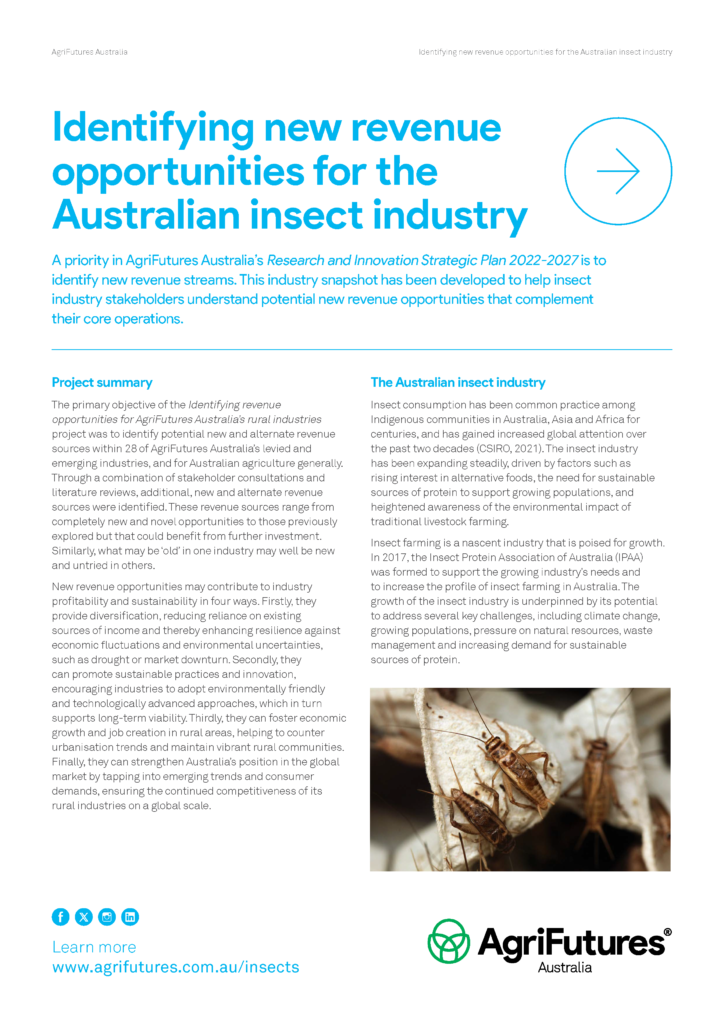The primary objective of the Identifying revenue opportunities for AgriFutures Australia’s rural industries project was to identify potential new and alternate revenue sources within 28 of AgriFutures Australia’s levied and emerging industries, and for Australian agriculture generally. Through a combination of stakeholder consultations and literature reviews, additional, new and alternate revenue sources were identified. These revenue sources range from completely new and novel opportunities to those previously explored but that could benefit from further investment. Similarly, what may be ‘old’ in one industry may well be new and untried in others.
New revenue opportunities may contribute to industry profitability and sustainability in four ways. Firstly, they provide diversification, reducing reliance on existing sources of income and thereby enhancing resilience against economic fluctuations and environmental uncertainties, such as drought or market downturn. Secondly, they can promote sustainable practices and innovation, encouraging industries to adopt environmentally friendly and technologically advanced approaches, which in turn supports long-term viability. Thirdly, they can foster economic growth and job creation in rural areas, helping to counter urbanisation trends and maintain vibrant rural communities. Finally, they can strengthen Australia’s position in the global market by tapping into emerging trends and consumer demands, ensuring the continued competitiveness of its rural industries on a global scale.
Industry-specific challenges
Specific insights relating to the Australian insect industry include:
1. Public perception and reluctance around insects as a source of food poses a significant hurdle for the expansion of ‘insects as food’ in Australia.
2. Scaling up production to an industrial scale to meet demand while driving down prices to compete with other feed and fertiliser suppliers is a major challenge.
3. Insect farming is a labour-intensive industry, and scalability is limited by the current lack of suitable automation technologies on the market. Investment to support technology development could also result in industry growth.
4. There is a lack of information and data on insect farming, handling, processing and manufacturing, and the industry supply chain. As a result, there is limited information to inform regulators and instill confidence in potential customers and investors.
Industry-specific opportunities
Specific opportunities relating to the Australian insect industry include:
1. Food waste conversion solutions, including the co-location of insect facilities with food processing companies. Additionally, using insect products and by-products as food, feed, fertiliser, cosmetics, pharmaceuticals and dietary supplements.
2. Integrating technology and automation tools could revolutionise the supply chain, ensure product consistency and facilitate increased production. Portable production units could also be used and moved around food processing facilities on a seasonal basis. Investment is expected to lower overall production costs, enabling the insect industry to keep pace with growing demand for food, feed and fertiliser.





